Lager: a beer produced from a bottom fermenting yeast that can survive at lower temperatures than the yeast used in ale. Lagers are typically fermented at temperatures from 45-55°F (compared to 65-75°F for ales), and reducing the rate at which the sugar converts to alcohol.
While that may sound like a bad thing – after all, don’t we want more alcohol? – it actually creates a beer that is more full-bodied with far fewer undesired flavor compounds, a mellow palette, and a much crisper character. If you want to know how to describe beers, you might want to check out this guide on terms.
Just like ales, there are dozens of different types of lagers. So, when I went to Vintage Cellar (one of our local wine and beer stores – love it there!), I asked them to recommend some lagers that showcased different styles.
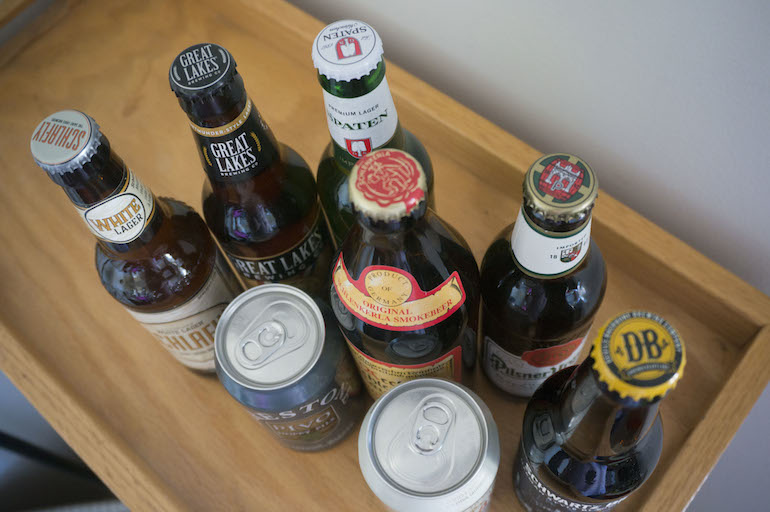
Photo by Maddie Lanier
If you want to brush up on your beer types before getting into the meat of our taste test, an awesome Spooner from Penn State wrote this small guide on decoding beer types.
Last semester, we had our first Spoon alcohol taste test. It sparked the idea of starting a trend that would later continue as a series. So, we got together one a cold Saturday in Blacksburg and tasted eight different lagers. Here are our thoughts on each:
Schlafly White Lager
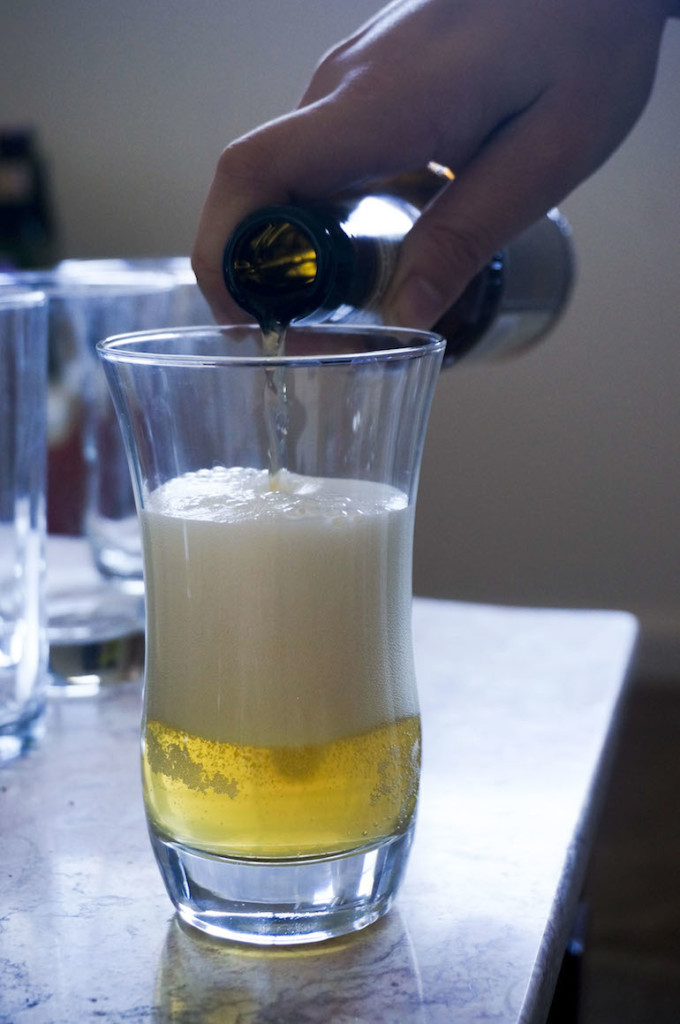
Photo by Maddie Lanier
Price: $1.75 for a 5.5% ABV 12-oz bottle
To start out our exploration into lagers, we have the Schlafly White Lager, a craft brew from Missouri. Based off of a German style of beer called Zwickelbier, pronounced “Tzvickle-beer.” This beer style is unfiltered, meaning the yeast is still suspended in the beer and is created from wheat and Europils (a style of barley).
When poured, this style of beer produces a nice creamy foam head at the top of the glass and only has 25 IBU (International Bitterness Units, which measures how bitter the beer will be), allowing the malt and wheat really shine through.
Overall, we found the beer a very easy drink with a very silky feel in the mouth and a clean finish. The low amount of hops yields a slightly bitter taste and more of a flowery taste farther back in the mouth. Overall, everyone who tried it enjoyed it.
Spaten Premium Lager
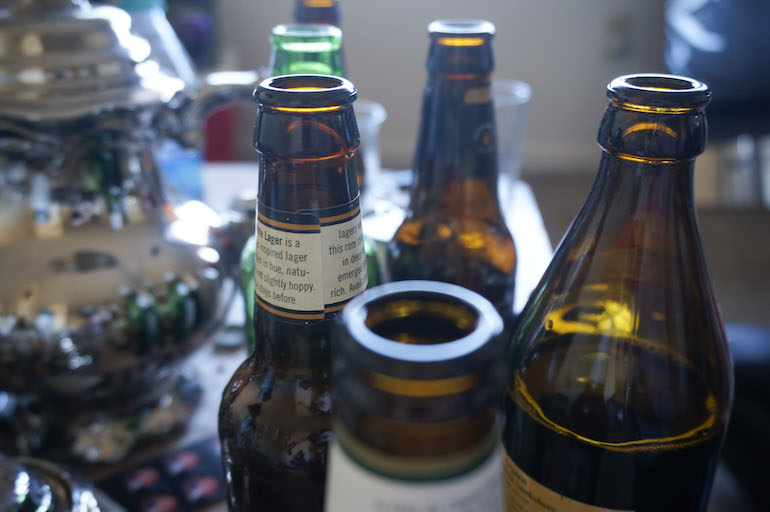
Photo by Maddie Lanier
Price: $2.05 for a 5.2% ABV 12-oz bottle
Spaten Premium Lager is a Munich Helles Lager imported from – you guessed it – Munich, Germany. This style of beer was developed in response to the Czech Pilsners in the mid-1800s. It features a spicy hop note with a stronger bread and malt note than that of the Czech Pilsner.
This style is one of the predecessors to the modern, golden lagers consumed worldwide. The first comment from our tasters was how much thicker the beer felt in the mouth compared to the first one, playing into the age old joke of how American beers are water compared to German ones.
Overall it felt like a much “stronger” beer but maintained a balance between the malt character, a very lightly toasted barley note, and a low – but noticeable – amount of hops.
Great Lakes Dortmunder Gold Lager
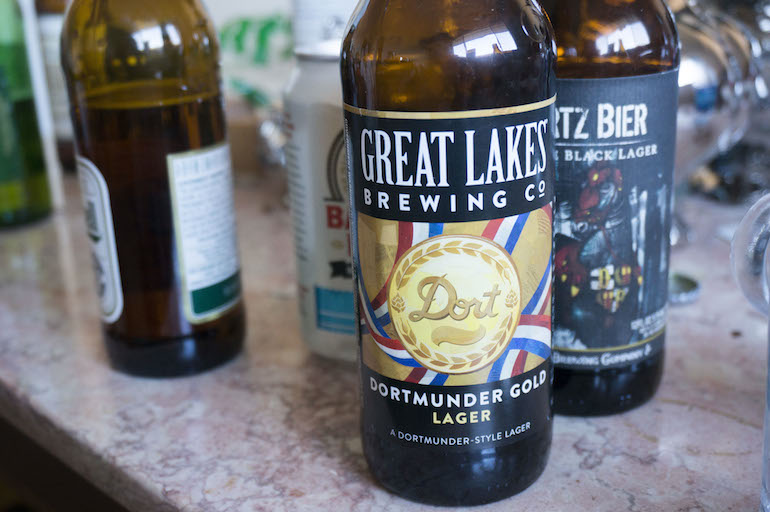
Photo by Maddie Lanier
Price: $1.95 for a 5.8% ABV 12-oz bottle
A classic Dortmunder is a German style of beer from 19th century steel and coal districts. It features a full body, moderately hopped beer with notes of biscuits and malts.
This beer has been “Americanized” with the addition of US varieties of hops, presenting itself as a much more fruity, lighter beer than the other lagers we tried. Overall the beer has a dry tone, which some tasters found refreshing.
Ballast Point Fathom India Pale Lager
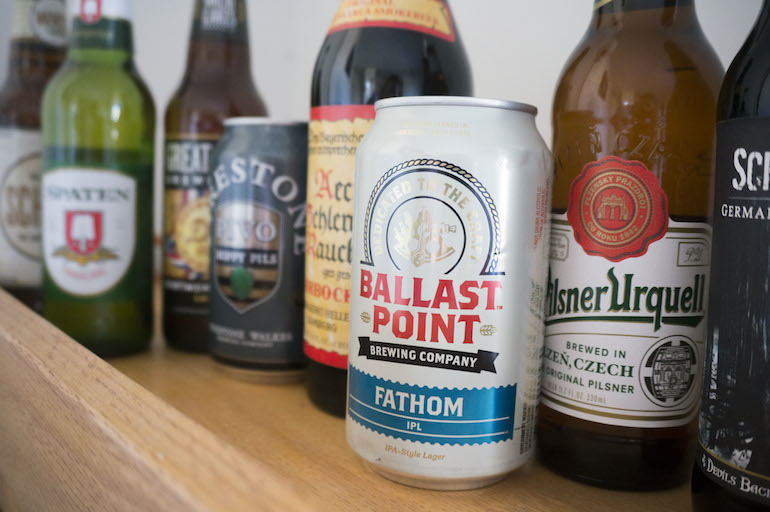
Photo by Susanna Mostaghim
Price: $2.85 for a 7.0% ABV 12-oz can
Ballast Point Fathom India Pale Lager is the union between the bitter, highly-hopped palate of a India Pale Ale and the clean, smooth taste of a lager. With 70 IBUs, this beer is hopped, but not nearly as much as some IPAs.
Overall, the aroma reminded us of grapefruit, citrus, pine, and tropical fruit. We definitely tasted citrus, a hint of grapefruit, and a strong bread and malt backbone. Overall, it was a very light beer with 7% ABV.
Aecht Schlenkerla Doppelbock Rauchbier
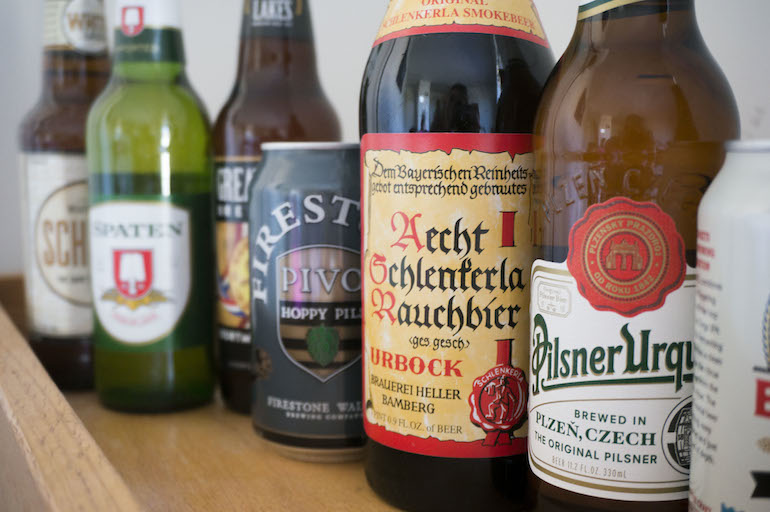
Photo by Maddie Lanier
Price: $5.95 for a 8.0% ABV 16.9-oz bottle
Another fine example of an imported German beer, this dark lager is a Doppelbock from Bamberg, Germany. Doppelbocks are very strong, malty lagers – sometimes referred to as “a meal in a glass” – and this version was no exception.
This particular lager was brewed with oak-smoked malt, which gave the beer a very strong smokey flavor and aroma. Think campfire smoke, with some notes of a good BBQ and hints of caramel and dark fruit. Most of our tasters couldn’t get past the smokey taste.
Although most of our taste-testers found the smokey flavor to be overpowering (one said, “it tastes like a campfire.”), a few found it had a nice balance with the caramel and fruit. It’s definitely a medium body beer, not quite as thick as a porter or stout, but much thicker than the other lagers. If you are a fan of whiskeys or other oak-aged spirits, this might be a good beer for you.
Firestone Pivo Hoppy Pils
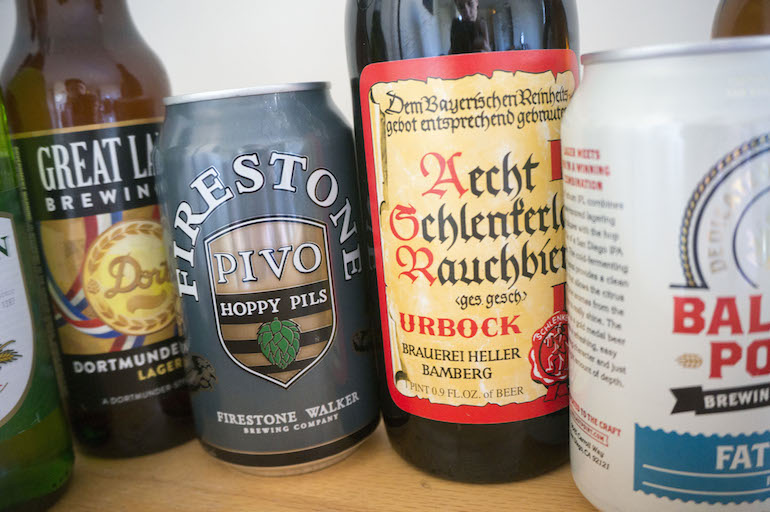
Photo by Maddie Lanier
Price: $1.95 for a 5.3% ABV 12-oz can
The next beer comes from one of my favorite breweries called Firestone. This particular beer is like a German Pilsener, but has German Saphir hops added to create a beer with floral aromas, a hint of citrus, and lemongrass notes.
When consumed, the grassy floral notes give way to a citrus taste yielding a nice, dry finish with hints of bitterness that balance out the malt. Overall, this beer is very light bodied, especially compared to several of the imported German beers.
Devils Backbone Schwartzbier
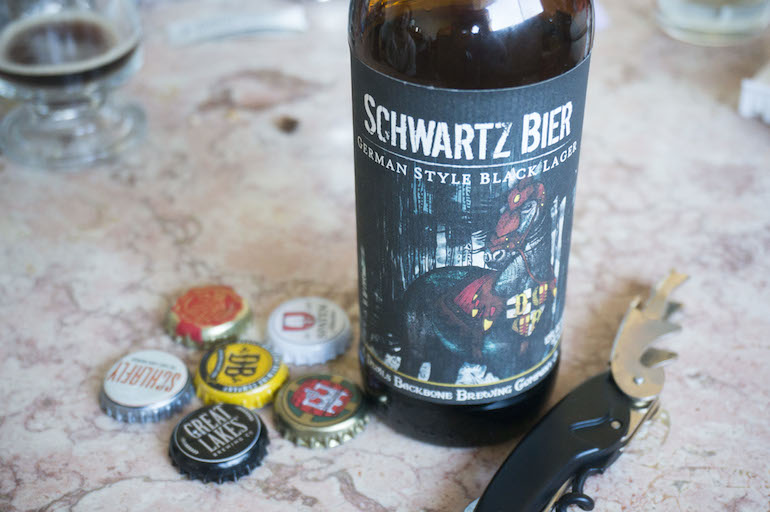
Photo by Maddie Lanier
Price: $1.95 for a 4.9% ABV 12-oz bottle
Another of my favorite breweries, Devil’s Backbone (from Roseland, Virginia), created this Germanic inspired lager. This style of beer is called Schwarzbier, which is German for “black beer.” The dark color is indeed the first thing you notice as you pour a beer of this style.
Instead of the normal golden hue, this lager’s color ranges from a dark red-hued burgundy to black. It features a variety of dark malts, which create a much more coffee-roasted note in the beer, but is still much lighter in flavor and taste than a porter or a stout.
In addition, the Northern Brewer and Saaz hops provide a large boost of bitterness and helps to offset the malty, coffee notes. Some might note hints of chocolate and breadiness as well. Overall it is a very light bodied, dark beer with a cleaner finish.
Pilsner Urquell
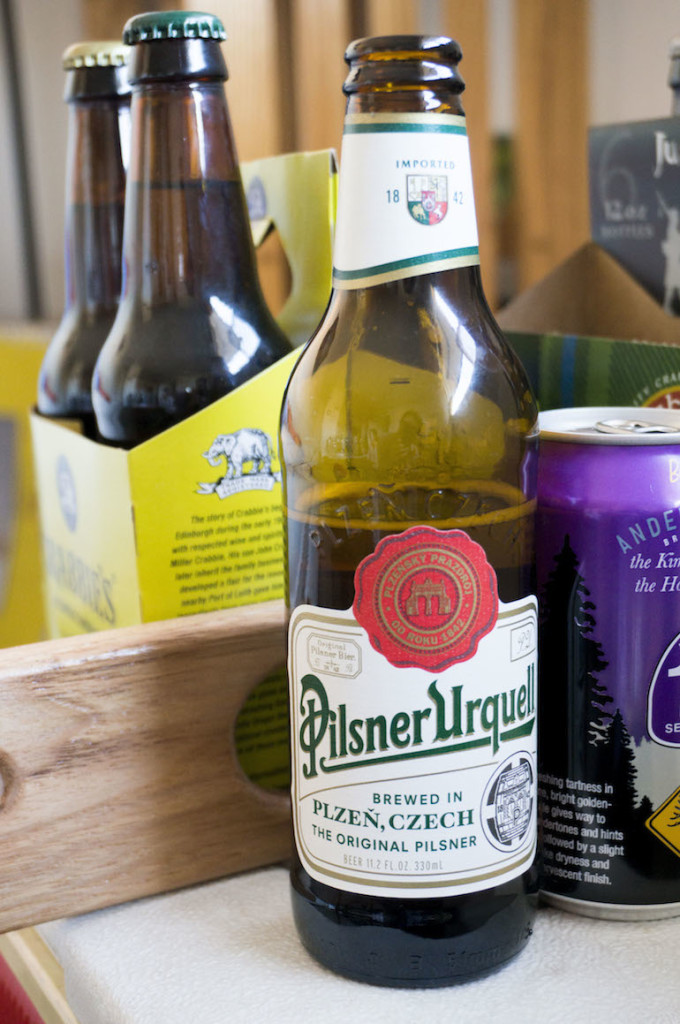
Photo by Maddie Lanier
Price: $1.80 for a 4.4% ABV 12-oz bottle
The last beer on our list, the Pilsner Urquell comes from Plzeň, Czech Republic. A staple of the style, this beer is a Czech Pilsener that has a light straw to golden color and crystal clarity, spicy bitterness and a spicy floral flavor and aroma.
This beer features a spicy bitterness from the Saaz hops, as well as floral flavors and aromas and sweetness from the light malts used in brewing. Our taster’s found it to be very smooth and clean, especially compared to the other lagers we tried, with a slight bitterness on the finish.
While this is nowhere near the end of the selection of lagers available in Blacksburg, we’ve sampled a larger variety than most would at Vintage Cellar. There’s always more craft beers rolling out to sample and we’ll be sure to try them as they come out.
This article was not sponsored by Vintage Cellar, all opinions are our own.


